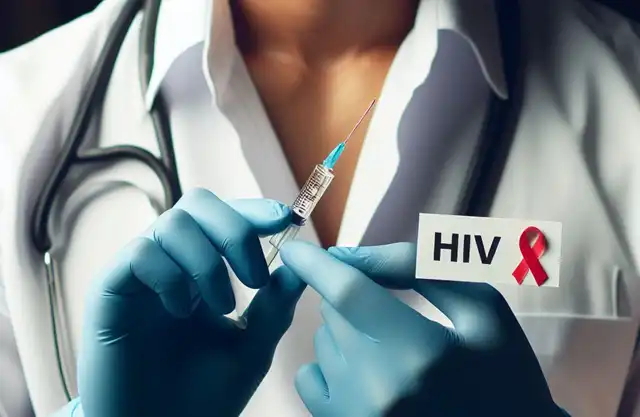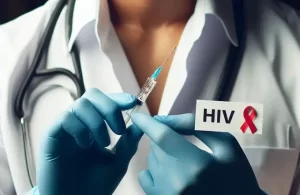What Are HIV-Related Cancers and How Can They Be Prevented?
- Can Cytokine Modulation Enhance the Efficacy of CAR-T Cell Therapy?
- What Are HIV-Related Cancers and How Can They Be Prevented?
- Metformin: From Diabetes Treatment to a New Approach for HIV Cure
- Advances in Research on HPV-Related Oropharyngeal Cancer and Immunotherapy
- Could mRNA Vaccines Be the Dawn of a New Era in Cancer Immunotherapy?
- Parkinson’s and Alzheimer’s Diseases May Originate in the Gut!
What Are HIV-Related Cancers and How Can They Be Prevented?
- Shocking! All existing AIDS vaccine developments have failed
- Sanofi Japan Data Breach: 730000 Healthcare Professionals’ Information Exposed
- CT Radiation Exposure Linked to Blood Cancer in Children and Adolescents
- FDA has mandated a top-level black box warning for all marketed CAR-T therapies
- Can people with high blood pressure eat peanuts?
- What is the difference between dopamine and dobutamine?
- How long can the patient live after heart stent surgery?
What Are HIV-Related Cancers and How Can They Be Prevented?
HIV infection weakens the immune system, making individuals more susceptible to various diseases, including cancer.
People living with HIV are at a significantly higher risk of developing certain cancers compared to their peers who are not infected, especially if their HIV is untreated or not properly managed.

Types of HIV-Related Cancers
Cancers that occur more frequently among individuals with HIV are classified into two categories:
-
AIDS-Defining Cancers
These include Kaposi sarcoma, non-Hodgkin lymphoma, and cervical cancer. They are termed “AIDS-defining” because the occurrence of any of these cancers confirms the progression from HIV to AIDS. The natural course of HIV infection is divided into acute, asymptomatic, and AIDS stages. The AIDS stage marks the final phase of the disease, characterized by HIV-related symptoms and the occurrence of opportunistic infections or AIDS-defining cancers, which serve as diagnostic criteria for AIDS. -
Non-AIDS-Defining Cancers
These cancers are more commonly seen in people living with HIV but do not indicate that the patient has entered the AIDS stage. Examples include Hodgkin lymphoma, liver cancer, lung cancer, anal cancer, head and neck cancers, and certain skin cancers.
Why Are People Living with HIV More Prone to Cancer?
The higher incidence of certain cancers in people with HIV is largely attributed to three main factors:
-
HIV’s Impact on the Immune System
HIV weakens the immune system and induces chronic inflammation, increasing the risk of developing some cancers. -
Virus-Related Tumors
Due to immune system damage, individuals with HIV are more susceptible to other viral infections, some of which are strongly linked to cancer. For example, human herpesvirus 8 (HHV-8) is associated with Kaposi sarcoma, Epstein-Barr virus (EBV) with non-Hodgkin and Hodgkin lymphomas, human papillomavirus (HPV) with cervical cancer, and hepatitis B and C viruses (HBV and HCV) with liver cancer. -
Unhealthy Lifestyles
Lifestyle factors like smoking and alcohol consumption are linked to an increased risk of lung and liver cancers. Additionally, frequent sun exposure raises the risk of skin cancer in those infected with HIV.
Factors Influencing Cancer Risk in People with HIV
The widespread use of antiretroviral therapy (ART) has significantly reduced the occurrence of AIDS-defining cancers by prolonging the asymptomatic phase of HIV infection. However, as people with HIV live longer, the incidence of non-AIDS-defining cancers has risen. Researchers predict that by 2030, prostate cancer will be the most common cancer in HIV-infected individuals, followed by lung cancer.
Reducing Cancer Risk in People Living with HIV
-
Early and Proper Antiretroviral Therapy
Initiating ART early can keep viral load undetectable, reducing immune system damage and the risk of viral co-infections that may lead to cancer. -
Vaccination
Vaccines like the HPV and HBV vaccines can help prevent infections linked to cancer development. -
Healthy Lifestyle Choices
Avoiding tobacco and alcohol can significantly lower cancer risk. A balanced diet and regular physical activity also contribute to better overall health. -
Cancer Screening
Modern medical technology enables the early detection of many cancers. Early detection significantly increases the chances of cure and improves both survival and quality of life.
By following these preventive measures, people living with HIV can greatly reduce their risk of developing cancer and improve their long-term health outcomes.
What Are HIV-Related Cancers and How Can They Be Prevented?
References:
-
-
HIV and Cancer. American Cancer Society.
-
Odeny TA, et al. Cancer in People with HIV. Infect Dis Clin North Am. 2024 Sep;38(3):531-557.
-
Chiao EY et al. The effect of non-AIDS-defining cancers on people living with HIV. Lancet Oncology. June 2022.
(source:internet, reference only)
Disclaimer of medicaltrend.org
Important Note: The information provided is for informational purposes only and should not be considered as medical advice.



